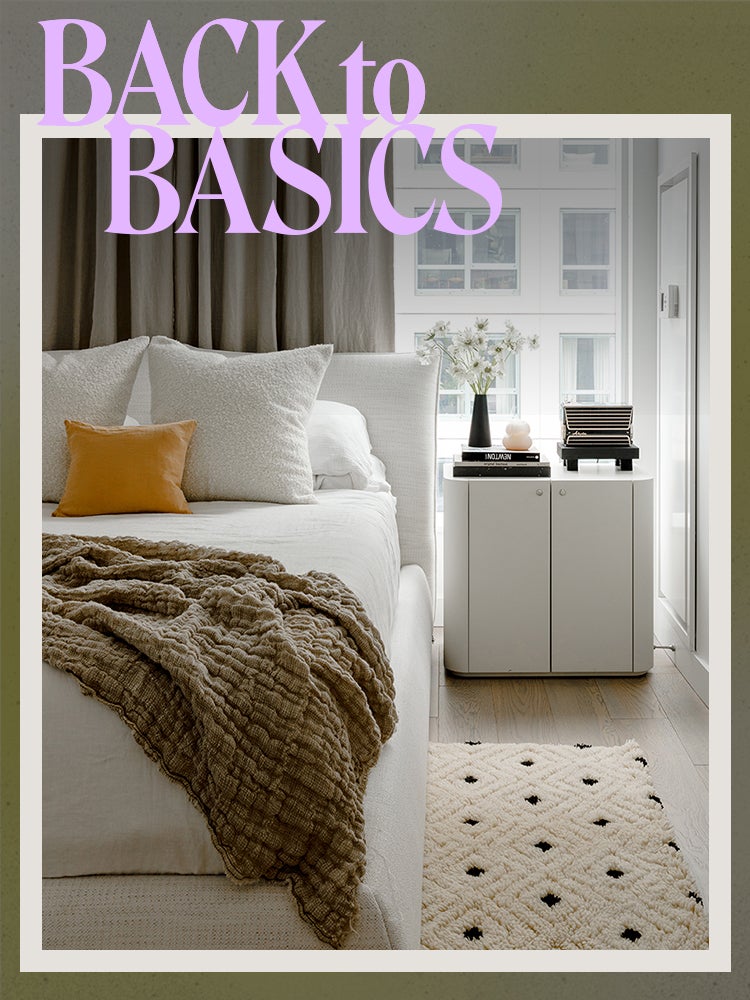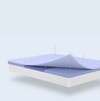The Foam Versus Spring Mattress Debate: Which One You (and Your Back) Will Love
There is also sustainability to consider.
Published Apr 26, 2022 1:00 AM
We may earn revenue from the products available on this page and participate in affiliate programs.
In an effort to help you narrow down the colossal search for your ideal mattress, we’re pitting two popular styles against each other: foam versus spring. The former offers contouring and softness that your aching back will appreciate, but the latter is a classic, known for its sturdy support. On which side do you lie? We did a deep dive with Sleep Foundation expert Keith Cushner into the price comparisons, pros, and cons of both types. Read on.
In the market for a new mattress? Start your search with Domino’s top picks:
What Is a Foam Mattress?
Construction
The top portion of a memory foam mattress is composed of one or more low-resistance polyurethane foam layers that contour to your body; help relieve back pain; and cushion pressure points like your shoulders, back, hips, and backside. The bottom section is a high-density polyfoam (often accompanied by even more memory foam, gel with pockets for increased airflow, or latex for comfort) that prevents heat from reaching the mattress surface. Then there’s the coil-free middle layer, which helps stabilize the mattress for less bouncing, says Cushner.
While memory foam is hypoallergenic, it isn’t biodegradable and you may notice off-gassing as you pull your purchase out of the box. If you’re using sustainability as a tie-breaker between these two mattress options, Cushner admits neither is particularly eco-friendly. “However, latex foam is the stuff that gets discussed in the eco-conversation, as it’s made mostly of rubber (sometimes natural, sometimes a synthetic blend),” he adds. Your other all-natural options are organic cotton or wool mattresses.
Feel
Of all the different types of mattresses, memory foam does the best at isolating motion due to its high density (which also gives this style a natural defense against dust mites and other allergen buildup). Because memory foam options don’t contain springs, however, they’re not as responsive as a spring mattress, so it takes longer for one to resume its original shape. What does this mean for your sleep? Moving around or changing positions could be more challenging. You might also notice that foam has a lot less edge support. Unlike a spring mattress, it doesn’t have an encasement around its frame, so there’s not a lot of stability on the sides. If you suffer from hip or joint pain or have a hard time standing up from a low position, this is something to keep in mind.
Facts and Figures
Expect to spend between $800 and $2,500 on this style, and get between seven and 10 years of use out of it.
Who Should Choose a Memory Foam Mattress
Anyone who suffers from back or joint pain will appreciate memory foam’s soft, contouring properties. Also light sleepers who are easily roused by pets or partners will find some relief (and more peaceful snoozing) in the superior motion isolation.
What Is a Spring Mattress?
Construction
The top layer of a spring mattress is usually a tufted or quilted fabric. Beneath that is one or more thin layers of foam, gel, or the like that lends extra comfort. The core is what you’d expect given this option’s name: either a continuous or pocketed coil system.
Continuous coils are formed by a single piece of steel that’s twisted into anywhere between 400 and 800 twists that are then linked by metal. This system helps to evenly spread your body weight over the mattress, which minimizes pressure-point buildup. In other words, less aching and more rest. But while they are typically more durable, continuous coils are prone to being bouncy and don’t contour to the body.
A pocketed coil system contains between 800 and 1,200 individual springs wrapped in fabric. They have an easier time cradling your body, as well as absorbing movements. And typically, they offer even better support in the form of pressure-point relief and spinal alignment than their continuous cousins.
Feel
If you prefer the sensation of sleeping on top of the bed over the sinking feeling of a foam mattress, then you’ll appreciate a spring option. They’re also great news for hot sleepers: “They do sleep a little bit cooler because there’s more room for airflow and less elements in the construction that trap heat,” Cushner explains. But beware: Depending on the construction quality, spring mattresses can sag in the middle and start to squeak over time.
Facts and Figures
Expect to spend between $500 and $1,200-plus on a spring mattress, and get seven to 10 years of use out of it.
Who Should Choose a Spring Mattress
Purists who value function over all else, this one’s for you (coils are the O.G. of mattress construction). Also anyone who suffers from back pain can benefit from its firmness.



